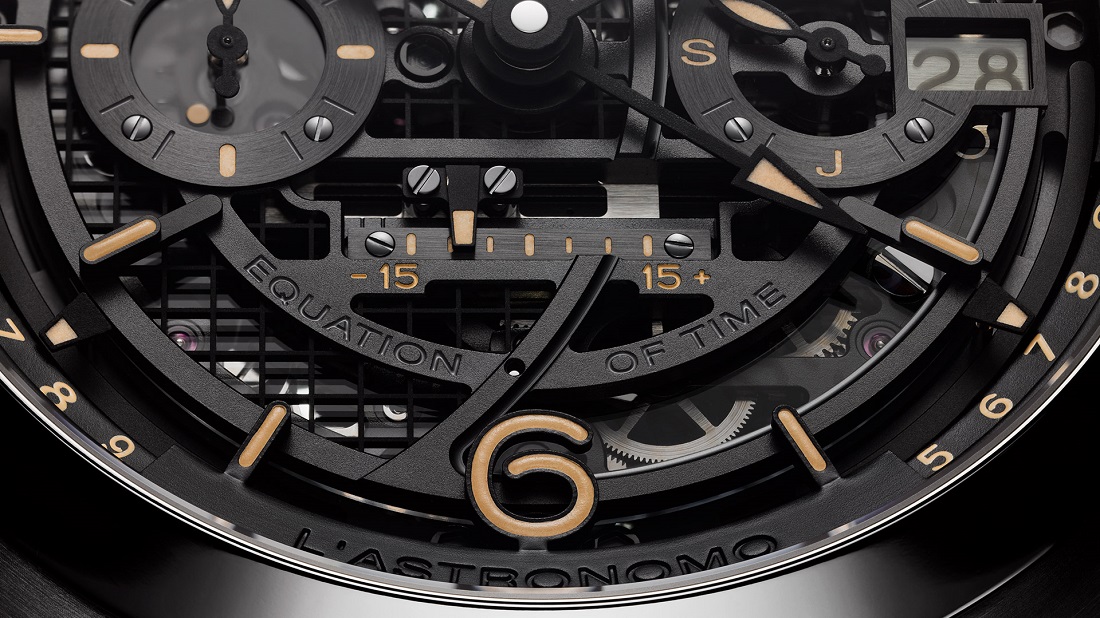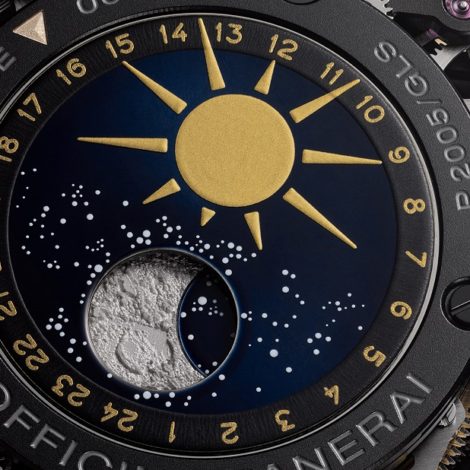
SIHH isn’t a time for watch brands to hold back and this year, we’ve seen more than a few jaw-dropping releases that’ll certainly keep watch lovers entertained for a while. Some of our favorite models, however, are those that show just how capable brands are when it comes to breaking free from the chains of conservatism and bringing us something that’ll really turn heads. This is exactly what Panerai has done with the Panerai L’Astronomo Luminor 1950 Tourbillon Moon Phases Equation of Time GMT, a customizable, fully-loaded Luminor that’s meant to pay tribute to Galileo Galilei. Built to order and packed from top to bottom with a variety of complications, the L’Astronomo marks a strong starting point for the brand this year and personally, I hope this is a sign of Panerai stepping out of its shell to pursue more exciting and out-of-the-box designs.

Not long after hearing news of Jean-Marc Pontroué’s forthcoming transition into Panerai’s CEO seat, I wishfully speculated that it could be the start of something new for the brand. Perhaps we’d see some cool new materials or designs that move beyond heritage re-releases. Because with so much potential and resources like their Lab-ID team, I’ve often wondered why it’s so rare to see Panerai really push through their own boundaries. But, the Panerai L’Astronomo Luminor 1950 Tourbillon Moon Phases Equation Of Time GMT, I think, is a step in the right direction. Housed in a massive 50mm brushed titanium case, the watch offers its wearer a nice, legible display in addition to sunrise/sunset times, an Equation of Time complication, GMT functions, and a moon phase indicator in a movement that can be personalized according to geographical coordinates specified by the client.

Looking at the dial, we’re greeted with an almost “Roger Dubuis-esque” skeletonization job but one that doesn’t sacrifice legibility. Because there isn’t technically a dial at all, everything is on display, including the tourbillon escapement and dual mainspring barrels capable of supporting a 4-day power reserve. Dead center and above 6 o’clock, we find the linear Equation of Time complication, which displays the difference between actual time (solar time) and conventional time (I’d be curious to find out if anyone would actually use this). Additionally, sunrise and sunset times are located on opposite ends and remain clear of the main display. A few traditional elements remain, like the distinct Panerai Arabics and the handset, which allows for a simple readout above an otherwise complex backdrop. But, one of the more noteworthy traits here is the date display, and this is where Lab-ID team comes in.

To keep the skeletonized look as clean as possible it was important for the date disc to remain completely out of sight with the exception of the small portion centered within the date window. That’s why Panerai incorporated a disc made of Borosilicate glass with numbers that are virtually invisible until they’re displayed in the actual date window. Here, a polarized crystal reacts with the laser-modified numerals and causes the current date to pop into view while the rest of the date disc remains almost completely transparent. This is exactly what I want to see from a brand like Panerai and while I’m sure I may never get a chance to handle one of these in person, I’d bet it’s a sight to behold.

When taking the moon phase display as well as the sunrise and sunset times into consideration, Panerai tailors each watch to the exact coordinates chosen by the wearer. Therefore, while the GMT functionality provided by the watch would be useful for travelers, it’s important to note that some functions will continue to operate specifically for the wearer’s “home time.” Looking at the caseback, we see that Panerai has devised an interesting display that merges both the moon phase complication and the day/night indicator. This is done with a pair of superimposed discs with the upper disc rotating once every 24 hours as it cycles through a nicely decorated sun and starry night sky motif.

The disc hidden below the day/night indicator is therefore responsible for the moon phase display. It rotates at about 6.1° per day and accounts for a full lunar cycle that can be easily viewed through the small opening on the upper disc. Nestled close to this dual-disc structure is a simple power reserve readout for the in-house caliber P.2005/GLS movement (GLS standing for Galileo Luna Scheletrato). Finally, the Panerai L’Astronomo Luminor 1950 Tourbillon Moon Phases Equation Of Time GMT is water-resistant to 100m and each one will come with an alligator leather strap.

Aside from the technical personalization, clients will also have the ability to choose case materials, case finishing options, handset and Super-LumiNova colors, as well as the strap color. As a result, pricing will vary and we’ll be sure to update you with live photos and more detailed impressions as soon as we go hands-on with the watch. Stay tuned for more SIHH 2018 coverage. panerai.com










